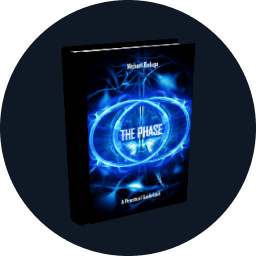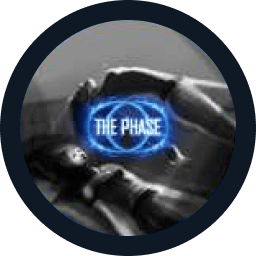The rapid eye movement (REM) sleep phase is a key stage in the sleep cycle characterized by rapid eye movements under closed eyelids, heightened brain activity resembling wakefulness, and a significant reduction in muscle tone. This phase plays a crucial role in memory consolidation, learning, and emotional regulation. Vivid and emotionally charged dreams occur during this sleep phase. The REM phase repeats several times throughout the night, progressively lengthening towards the morning. Research has shown that the REM phase is essential for maintaining cognitive functions and mental health.
What is the rem phase of sleep?
The REM sleep phase is defined by several distinctive features:
- Fluctuations in heart rate
- Irregular body temperature (it usually increases but may drop in colder environments)
- General muscle atonia (though minor twitches in facial muscles and limbs can occur)
- Elevated blood pressure
Dreams can occur during any sleep phase, including deep sleep. However, dreams are the most vivid and memorable during the REM phase, and people can experience their surroundings with heightened senses while perceiving physical sensations, smells, and touch.
All of these phenomena have scientific explanations. For example, as body temperature rises, “warmed” blood circulates faster to the brain due to peripheral blood vessel constriction. This enhances brain activity, making dream imagery more vivid and sensations sharper.
If an electroencephalogram (EEG) is conducted during the REM sleep phase, it shows brain activity similar to wakefulness. Theta waves can be observed in the hippocampus, while the muscles of the body remain completely relaxed, creating a paradoxical state where the brain is active but the body is immobile.
During REM sleep, special pontine-geniculo-occipital (PGO) waves are also produced in the brainstem, affecting the visual cortex, which corresponds to the brain activity typical of this phase.
In essence, during the REM phase, the brain exhibits high activity despite complete muscle relaxation and the most vivid and realistic dreams occur. The brain waves characteristic of this phase, such as theta and PGO waves, reflect active cognitive processes, making the REM sleep phase critical for memory and emotional processing. Due to the brain’s heightened activity and the tendency for vivid dreams to occur, lucid dreaming is most likely to occur during the REM phase.
Characteristics of REM Sleep
When explaining what the REM sleep phase means, it is impossible to capture its complexity in one sentence. Numerous studies have been conducted on the subject, revealing many interesting facts. During the REM phase, the eyes move rapidly, and muscles twitch, yet the body remains completely relaxed. In 99% of cases, if a person is awakened during this phase, they will report dreaming. In some experiments, researchers shone a light or sprayed water on the subject’s face. Upon waking, the subject would mention seeing water or light in their dreams. These findings suggest that high-frequency brain oscillations in the REM phase manifest themselves in the dream world.
The REM phase occurs every night. For an adult with a standard 8-hour sleep schedule, the REM phase typically repeats 4–6 times, depending on the quality of sleep and external conditions. It is believed that we dream during every REM phase, although most people only remember one or two dreams, or sometimes none at all.
Other studies have confirmed that people experience clear and detailed dreams during the REM sleep phase. For example, participants who awakened during deep sleep either failed to recall any dreams or only remembered vague and blurry images. However, when participants were awakened during or immediately after the REM phase, they recounted detailed narratives that often included emotions and physical sensations.
Research has also been conducted on the timing and methods of waking people during the REM phase. Those awakened suddenly in the second half of sleep were more likely to remember their dreams, whereas gradual awakenings or awakenings during the first half of sleep resulted in fewer and less vivid memories.
The REM and non-REM sleep phases differ significantly. During non-REM sleep, muscle tone and metabolism decrease, whereas they increase during the REM phase. Physiological manifestations in REM sleep are varied and often unrelated to the content of the dream. For instance, someone might dream of something calm and pleasant while experiencing muscle twitching or sweating, which indicates fright. As another example, men may experience brief episodes of arousal even if their dreams contain no sexual content. Notably, if a man suffers from impotence but experiences regular nighttime arousal, the problem is likely psychological rather than physical.
The Impact of the REM Phase on Humans
The REM sleep phase is a crucial part of a person’s rest and is necessary for the stable functioning of the body and nervous system. If a person does not enter the REM phase of sleep, they will experience increased levels of aggression, irritability, and excitability, and their logical thinking and memory will deteriorate. This suggests that the REM phase plays a role in replenishing serotonin, the hormone responsible for stress resilience, and improves cognitive processes such as thinking and memory.
In conclusion, the REM phase is integral to maintaining mental and emotional health. The paradoxical combination of intense brain activity and muscle relaxation defines this stage, making it essential for cognitive functions, emotional regulation, and the vivid dreams that most people associate with restorative sleep.
Mikhail Raduga — Breaking the Illusion of Reality
FAQ
Recommended reading
Human sleep phases – How they work
How long does the REM phase last
Rapid eye movement sleep (REM phase) – what is it and what is it characterized by









